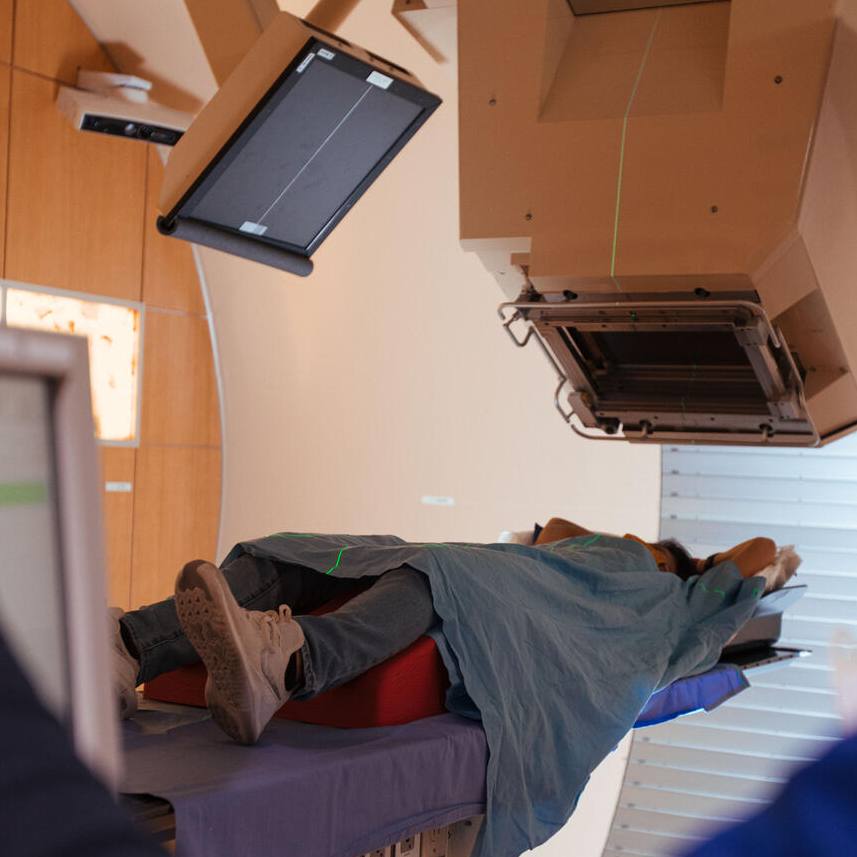-
Mayo Study Finds Shoulder Replacement Eases Pain, Improves Motion in Rheumatoid Arthritis Patients
ROCHESTER, Minn. — Jan. 13, 2014 — Shoulder arthritis is a common problem for rheumatoid arthritis patients: pain and difficulty moving their arms can grow so severe that daily tasks and sleep become difficult. If medication and physical therapy aren’t enough, shoulder replacement surgery is a common next step. Despite surgical challenges with some rheumatoid arthritis patients, the procedure improves range of motion and reduces pain in nearly all cases, especially for those with intact rotator cuffs, a Mayo Clinic study shows. The findings are published in the Journal of Shoulder and Elbow Surgery.
“I think it’s quite encouraging,” says senior author John Sperling, M.D., an orthopedic surgeon at Mayo Clinic in Rochester. “What we’ve learned from this study is that if people do develop significant pain in their shoulder due to arthritis associated with rheumatoid arthritis, shoulder arthroplasty really is a predictable and reliable operation to help them improve their function and relieve pain.”
Journalists: Sound bites with Dr. Sperling are available in the downloads.
Rheumatoid arthritis is an inflammatory autoimmune disorder in which the immune system attacks the body’s own tissues, causing joint problems and sometimes affecting other organs. Many patients eventually develop shoulder arthritis; sometimes, bones start wearing away and rotator cuffs tear, making shoulder replacement surgery more complicated.
Researchers used the Mayo Clinic Total Joint Registry to study 303 patients with rheumatoid arthritis who had shoulder replacement at Mayo Clinic and were followed by physicians for at least five years.
Of those who had total shoulder replacement, in which both sides of a shoulder joint was replaced, 96 percent were still alive and had no need for further arthroplasty on the affected shoulder five years later, and 93 percent were alive with no need for additional surgery a decade later. Among those who had only one side of a joint replaced, known as partial arthroplasty, those statistics were roughly 89 percent five years after shoulder replacement and 88 percent 10 years after the surgery.
Patients with intact rotator cuffs — tendons in the shoulder that help people raise their arms — did better after shoulder replacement than those with damaged rotator cuffs, researchers say.
Shoulder replacement surgery usually is tried after simpler treatments, such as medication, injections and physical therapy, fail and patients are in significant pain, Dr. Sperling says. It is important that the patient’s rheumatologist, surgical team and physical therapist coordinate care to help the patient achieve the best outcome, he says.
“Thankfully, the shoulder replacement surgery has really come a long way over the past 20 to 25 years. Typically now it’s a one-hour surgery, one night in the hospital and the arm in a little soft sling for six weeks, and all the physical therapy can be done on their own at home,” Dr. Sperling says.
Many patients six weeks after surgery are able to drive again, sleep on the side that bothered them before and resume a wide variety of activities, such as golf and gardening, he says.
Financial disclosures: Dr. Sperling receives royalties from Biomet. Co-author Robert Cofield, M.D., also a Mayo Clinic orthopedic surgery, receives royalties from Smith-Nephew.
###
About Mayo Clinic
Recognizing 150 years of serving humanity in 2014, Mayo Clinic is a nonprofit worldwide leader in medical care, research and education for people from all walks of life. For more information, visit 150years.mayoclinic.org, MayoClinic.org or https://newsnetwork.mayoclinic.org/.
_______________________________________________________________________________
MEDIA CONTACT: Sharon Theimer, Mayo Clinic Public Affairs, 507-284-5005, Email: newsbureau@mayo.edu








